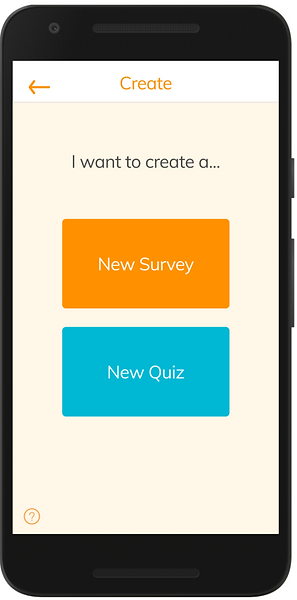
Celeste Forms
Role: Team Liason & Monitor Evaluator
Skills: UX Design, UX Research, Storyboarding, Wireframing, Prototyping
Timeline: April 2021 - June 2021
Team: Tina Yu, Audrey Fu, Bowei Tang, Miriam Hamidi, Adam Gomez, Devadatta Baruah

Celeste Health Initiative
The problem context is in India, where CHI will be carrying out its primary work in the upcoming period. CHI will be reaching out to school students, both girls and boys, to teach them about menstrual health, and then gathering feedback on their program using surveys. Our users are primarily healthcare workers who volunteer in India and also social workers in CHI. Currently, CHI is having trouble efficiently collecting and analyzing data from the communities they’re serving. They have mostly relied on paper surveys filled out by healthcare workers so far, which takes time and inevitably leads to human error. As a result, the data they had collected in Tanzania was largely unpublishable and unusable. Celeste Health Initiative needs a reliable and efficient way to gather survey feedback from participants so they can gauge and communicate the efficacy of their menstrual health management program. Additionally, how to administer the survey to produce the best results was another important consideration for our team.
Problem Statement
Personas

Our first persona is Angela, a CHI representative. Our creation of this persona is based on the CHI representative that we have interviewed (Pauline Thach).

Our second persona is Anika, a healthcare volunteer working with CHI, representative of our end users. This persona is based on what we know of healthcare professionals that work with NGOs as well as what our CHI representatives have told us in our interview.
Design Ideas



After consulting our stakeholders, we decided to move forward with Celeste Forms.
Why Celeste Forms: We chose this idea because the scanning feature ensures that survey responses get digitized accurately and quickly, while still allowing students and survey takers to give feedback in a way they’re most used to. Because CHI operates in rural areas, we cannot rely on students having ready access to technology or being familiar with electronic surveys, so we had to make sure the surveys themselves would still be paper-based. Only the survey administrator would need a mobile device capable of scanning, keeping the need for tech as low as possible in this solution.
Wireframe

We showed these sketches to our stakeholders for feedback:
-
Free response section
-
Allow users to delete old forms
-
Delete unwanted questions
-
Add a feedback section from the home screen
-
Add text under icons for better signifiers
-
Moved language function to the home screen
-
Removed other unnecessary features
-
Incorporate CHI's branding using their style guide
Final Prototype
We created the final prototype of Celeste Forms on Figma. Celeste Forms has five main user flows:
-
Login and Home: users can view or edit their current forms, and access various settings
-
Create: users can create either surveys or quizzes within the app or import questions from a third-party app if they’ve already created their form.
-
Print: forms can be printed onto paper so that students in regions without access to electronic devices can still fill out surveys easily
-
Scan: filled out forms are then scanned by the app, taking away the need for volunteers to transfer data by hand
-
Export: the data is saved into a .csv file, and can be exported to a third-party app for further analysis
Login:



Create:


Print:



Scan:


Export:

Reflection
This project was actually my introduction to the world of design. I took a chance and delved right in and saw first-hand how impactful UX designing is. My worries of being less talented in traditional forms of art subsided as my passion for designing something that underserved communities can use grew. Realistically, I had never considered the need for UX designers in non-profit organizations. It flew past me that UX designing is everywhere.
Not only was this my first experience in UX designing, but it was also my first opportunity to design for development. I hope that Celeste Health Initiative moves forward with Celeste Forms. Our group discussed with Celeste Health Initiative how we would love to see them pair this application with a web-based platform so the application's potential could be maximized. Lastly, I would like to thank the UCSD Global Ties program staff and Celeste Health Initiative for giving my team and me the opportunity to engage in this design for development.

